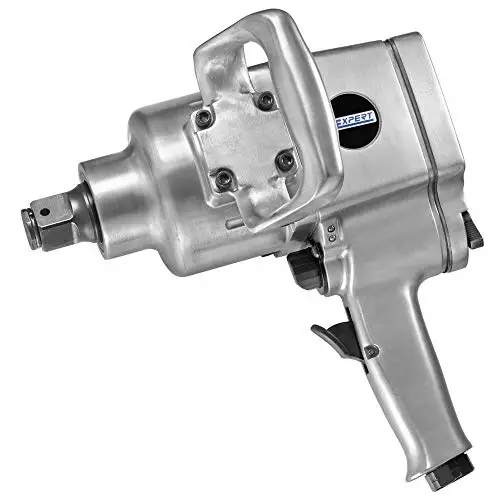Luckily, the tools you will find on market do not have a torque adjustment feature except a very few ones like Milwaukee 2769-22 which is recently launched and has torque adjustment. But I will explain how that is possible later in the article.
Before you find an answer to how to adjust torque on a cordless impact wrench, you need to understand how an impact wrench works and why there are no torque controls on an impact wrench. We will also discuss a few very cool ways to limit an impact wrench’s output torque.
How to adjust torque on an impact wrench? You can adjust torque on an impact wrench by using attachments. The most common and in-expensive way is using torque sticks, and they can very accurately adjust the end torque. You can also use dynamic torque limiters, which are very complex but are extremely precise. For air impact wrenches, you can also use air regulators to adjust output torque to some extent.
On the newer models of Milwaukee tools, you can adjust the output torque with help of a button. Here is how it’s done.
Depending on your use case, you can use different methods to adjust the output torque, and I will discuss them in detail. But let’s dive into the reason behind no torque control on an impact wrench.
You may be wondering why there is no setting in an impact wrench to adjust its torque.
The answer to this question lies in the fundamental design philosophy of an impact wrench. An impact wrench is like a hammer (The direction of hammering is rotational).
The output torque of an impact wrench is the maximum power it can hit the nuts.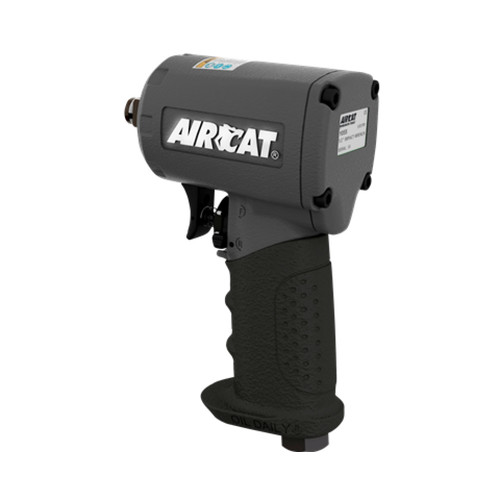 I will repeat this: The output torque is not the maximum torque it can provide; it is the power of the stroke it gives.
I will repeat this: The output torque is not the maximum torque it can provide; it is the power of the stroke it gives.
Imagine you are hitting a wrench’s end using a hammer to tighten up a nut. If you keep doing this, despite the hit being too soft, it will infinitely keep tightening the nut, although, after some time, the change will be almost impossible to measure.
An impact wrench automates this same process; hence the end torque is not the goal. It is just making the hitting process more compact, quick, and precise. That is why there is no torque setting in an impact wrench.
Higher torques for nuts and bolts can damage its threads or can break the bolt itself. High Torques also result in complex maintenance once you need to open them again.
Lower torques can be a safety hazard, and the equipment’s actual functionality can fail due to loose nuts. You need to understand the lower and upper limits concerning your application.
Another essential thing to understand is the difference between over-tight and properly tight nuts. If you must tighten a screw at 100 ft-lb and tight it to 150, the additional 50 won’t create any issues.
Ok, before I start discussing torque control on cordless impact wrenches, let’s discuss how to control torque on air impact wrenches, as you have a little more control over the output torque than electric ones.
You can control torque on an air impact wrench by using an air regulator. The air regulator can be attached to the end pressure line or the impact wrench.
Just adjust the air regulator to achieve the required output torque. However, the air regulator will only change the strike’s intensity, and it won’t precisely tighten the nuts to the required torque.
You will have to use the same methods as for the cordless impact wrench to limit the output torque. The techniques are discussed below.
The good news is, that we have got multiple tools and attachments which we can use to limit the tightening torque of nuts and bolts.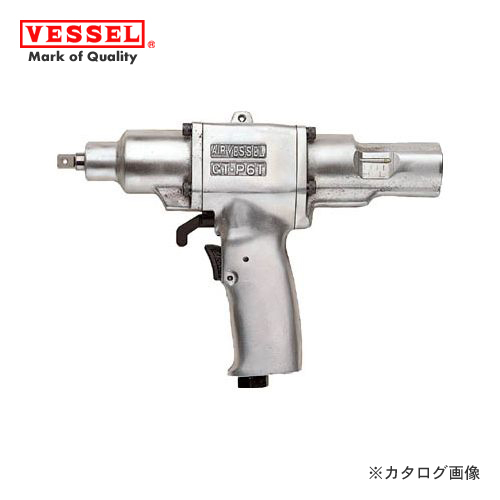
Again, I will repeat that we are not controlling the impact wrench’s output torque; instead, we are managing the tightening torque.
Using torque sticks to limit impact wrench torque is the most popular method.
Using a torque stick is a plug-play process. Just attach the female end with your impact wrench and connect the nut drivers on the male end.
Identifying a torque stick is very easy as the rated value is directly written on it. The thicker the diameter of a torque stick, the higher the torque rated limiting value.
A torque stick dampens the circular impacts (twisting) above the rated ft-lb torque value of the Stick.
The Stick is used as an extension and will work as a regular attachment till the nut reaches the rated tightening torque of the Stick. Thicker torque Sticks are hard to twist; hence they are rated for higher fastening torque.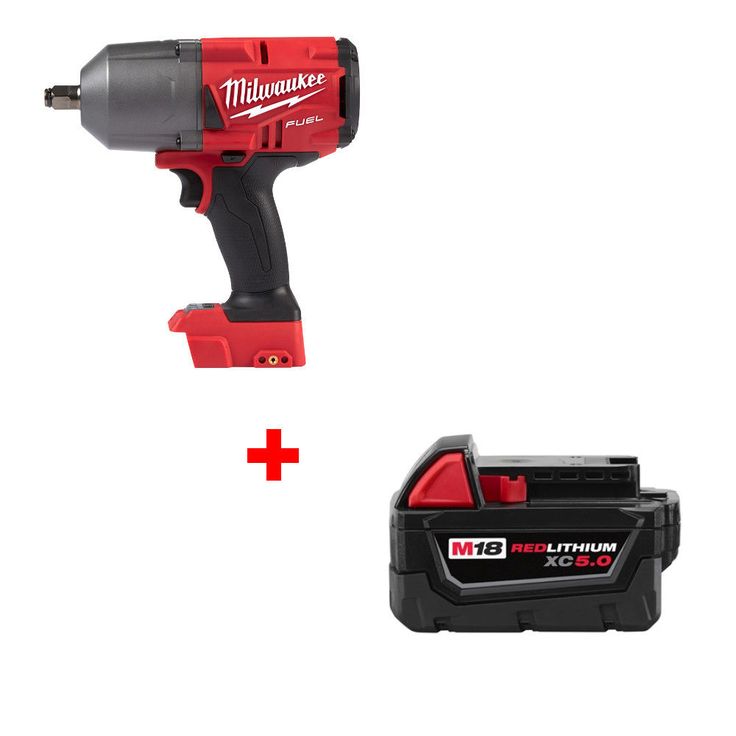
Also, note that a torque stick will not work with a drill driver or manual rachet as it only dampens the impact for a fraction of a millimeter.
You also need to understand that the torque sticks will not yield correct results if you are using an impact wrench that has lower torque output.
For example, this will not work if the wrench’s max output torque is 100 ft-in and you are using a stick rated at 150 ft-in.
Similarly, if your impact wrench is powerful or the trigger is pressed for higher speeds, the dampening can cross the max circular deformation it can bear and either snap or keep tightening the lug nuts.
You can get a set of torque sticks for 50-100 dollars. These are pretty inexpensive and very popular.
Dynamic Torque Limiters are more complex and expensive devices utilizing clutches and complex mechanisms to limit the end torque.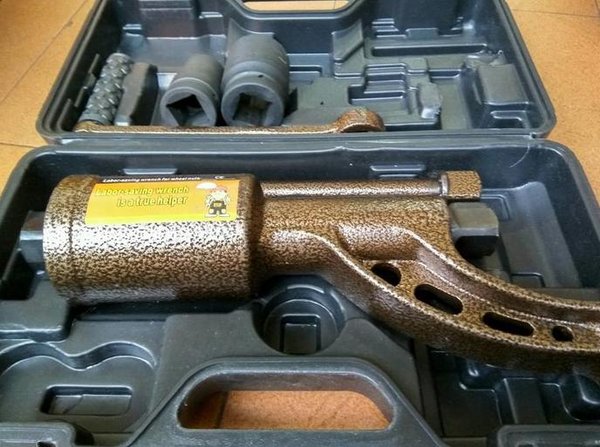 They are hard to calibrate but are precise torque limiters used with regular, impact, air, and traditional hand drivers.
They are hard to calibrate but are precise torque limiters used with regular, impact, air, and traditional hand drivers.
Using a dynamic torque limiter is easy. You have to connect it between the nut driver socket and your tool. However, calibrating an active torque limiter might need additional equipment. You can also find torque limiters rated for a specific value, and they are pre-calibrated.
These adapters and limiters can cost you around 50-400 dollars, depending on the quality you are aiming to buy. Industrial Grade adapters are pretty expensive.
Ok, so on one hand, I am saying that it’s not possible for impact wrenches to stop at a certain output torque, and on the other hand, we have this Milwaukee 2769 which can provide a certain level of output torque?
The answer to it lies in the last paragraph you just went through. These impact wrenches from Milwaukee have the Electonic Dynamic Torque Limiter built-in.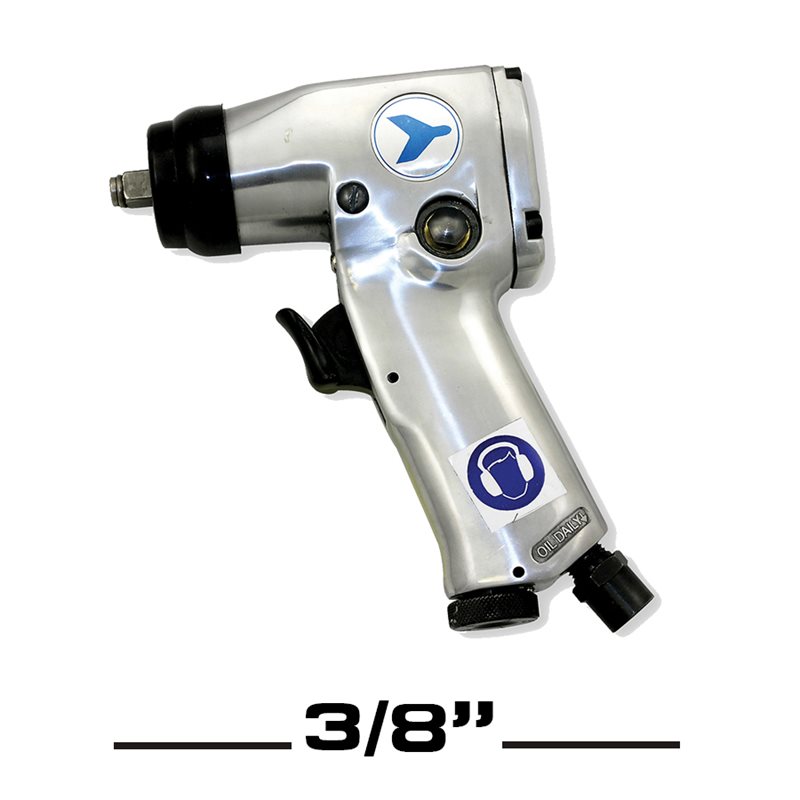 It will sense the output torque and will stop delivering more power after a certain level.
It will sense the output torque and will stop delivering more power after a certain level.
It’s a complex piece of equipment, which will need calibration and is not mechanically based. If the sensors somehow fail, they will stop working.
I am not saying it will break, but what I mean to say is, that it is not like the tightening torque adjustment we have in screwdrivers and drills.
So, it’s a great initiative from Milwaukee and we hope other companies will also integrate this intelligent electronic chips and sensors to enhance impact wrenches capability to limit the output torque.
If you are out of luck and don’t have any limiter or adapter, you can use a few other methods to adjust the ent tightening torque.
Method 1 – Experience: The first method is experience-based. If you know your impact wrench and have worked with it a lot, you can very precisely tighten the nuts and bolts without using any limiter. Luckily, this is the most common method used by professionals. Using your instinct, they know it. As I mentioned earlier, a few ft-lb additional tightening torque is not an issue.
Luckily, this is the most common method used by professionals. Using your instinct, they know it. As I mentioned earlier, a few ft-lb additional tightening torque is not an issue.
Method 2 – Using Manual Torque Wrench: This method involves additional time and effort. If the tightening torque is essential, you can use a manual torque wrench to finish the job. You have to use your impact wrench at a low speed and barely tight the nuts. Once done with all nuts, use a manual torque wrench to rotate the last thread.
Method 3 – Using the speed switch to your advantage: This method advances the first method. All good impact wrenches come with a speed switch. The speed control can help you gain control of your impact wrench and estimate the end torque quite successfully.
I have compiled a list of impact wrenches and drivers you can select concerning your usage. You can check them here: Best Cordless Impact Drivers and Wrenches.
So, in summary, impact wrenches have no torque adjustment feature, and you will have to use additional adapters to adjust the tightening torque of your nuts and bolts.
Overtight and under-tight lug nuts can be a safety hazard when you are driving along the highway. This not only keeps you in danger, but it can also be fatal for other people moving along with you.
Asked
Modified 4 years, 11 months ago
Viewed 88k times
There's such tool called impact driver (like this one for example). The manual says it uses a special mechanism to produce a series of torque impulses to fasten/loosen nuts and screws.
The tool has only two adjustments - the forward/reverse switch and the On/Off switch. The deeper the On/Off switch is pressed the faster the tool motor rotates.
There's no clutch to adjust the torque value after which the clutch would disconnect the motor. How do I control the torque without a clutch?
Suppose I need to assemble a section of fence that will require say one thousand screw/nut connections with nuts of the same size (that's not an imaginary task - I did such job without an impact driver). Obviosly I need to tighten all nuts to more or less the same torque. If I overtighten a nut it can just break or cut the screw or bend the parts it connects - that's bad. If I undertighten a nut it will soon loosen and fall out - that;s bad as well.
So let's pretend I use nuts that need to be tightened to approximately 70 Newton-meters and the driver I use is said to produce torque up to 100 Newton-meters.
And of course I need to drive those nuts fast - otherwise why would I use a power tool instead of a screwdriver and a usual wrench? So obviously I can't time the periods of applying torque or count impacts or whatever else - I need some reliable way to achieve more or less the same right torque for all nuts.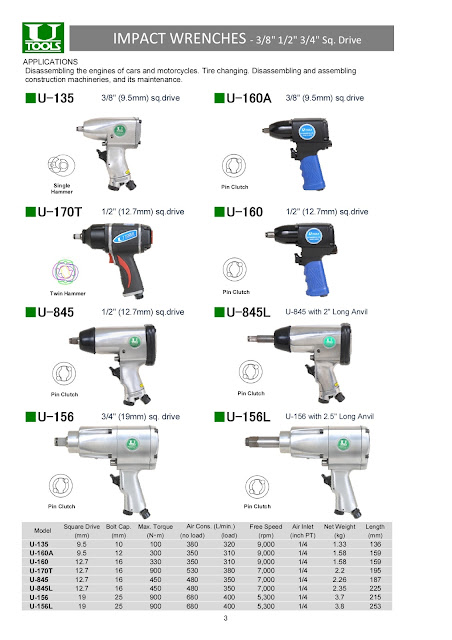
Please note: I don't care of achieving exactly the right torque. I only care of achieving more or less the required torque - so that the nuts don't loosen on themselves and parts are not damaged while the nuts are being tightened. The primary concern is that the driver works very fast, so if I hold the switch pressed for just too long I can easily overtighten the nut and cause unintended damage.
How do I achieve roughly the same torque repeatedly for multiple nuts when using an impact driver?
5
Usually, around the home anyway, there are other signs to let you know when you've applied enough torque. MarkD noted a common one -- when you see the screw head just go below the surface of the wood. In your fencing example, if you're tightening lag screws or nuts with washers, you'll see the washer start to sink into the wood long before you've applied enough torque to shear off or strip the screw or bolt.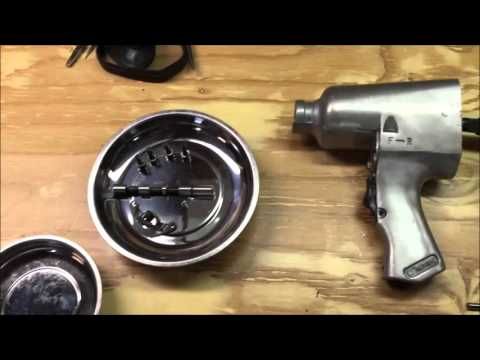
It's a great tool for this kind of work, and it's super fast. Don't slow yourself down unnecessarily by underestimating your own ability to judge how much torque you've applied, and how much is enough for your application.
"How do I achieve the same torque repeatedly for multiple nuts when using an impact driver?"
Short of manually using a torque wrench like woodchips recommends, you don't. The point of an impact driver is not to apply a consistent torque. It is to apply more torque than can be obtained from a traditional driver. One of the more common uses is to loosen seized up, or over-tightened bolts/screws. I also use mine quite a bit when driving screws into wood when the final torque doesn't matter (e.g.- I just need the screw head to be slightly below the surface of the wood.. rough work).
In other words, if your need is consistent torque, an impact driver is not the tool for the job. A traditional clutched driver is going to be more appropriate.
I would get all the bolts driven, quickly, but not tightly using the torque driver. Don't cinch them down. Then walk along and use a hand held torque wrench on each.
Don't cinch them down. Then walk along and use a hand held torque wrench on each.
6
The torque applied to a faster by an impact wrench can be controlled by a torque limiting extension bar. The torque limiting extension bar looks like a normal socket extension, except that they are designed to flex at a predefined torque. This flex absorbs the impacts from the wrench and stops the transmission of energy to the fastener at the predefined torque. The extension bars come in kits and are usually color coded for different torque values. For example a black bar for 30 ft/lb, green for 65 ft/lb and so on.
Assuming the torque can in fact be adjusted you can use a regular hand-help torque wrench to get a pretty close calibration. It's a matter of clamping the later, which has been set to the desired reading, in some way. Start with the impact driver set somewhat lower than the desired setting and connect the two using whatever socket extension joiner you have available. Now gradually adjust the impact driver till it makes the torque wrench clicks or does whatever it does when it's up to its setting.
Now gradually adjust the impact driver till it makes the torque wrench clicks or does whatever it does when it's up to its setting.
3
I know this is 6 years old, but the answer to OPs question is simple and not answered fully to this point in time. The simplest way to adjust the torque on a torque wrench that is hpa (high-pressure air) powered as is the case in this example is to simply turn down the pressure on the air regulator (there is almost always a turn knob which limits the working pressure in an 'air-hog' setup (as they are known colloquially throughout the midwest and southern states).....Here are the steps to set the torque gun to 'torque' a fastener to a desired level.
1.) get a comparable scrap of lumber to adjust the torque settings to a desired level 2.) grab one of the fasteners that you intend to use 3.) Screw it in to the desired depth/penetration/(torque?? ;)) that you want. .. 4.) If you need less torque (i.e. if the screw or bolt or whatnot is twisting off or splitting the wood), then just TURN DOWN THE PRESSURE....so if it was at one hundred I might use what I call the 'bracketing method' to get to the correct working pressure by cutting the pressure back WAY TOO far....say to 50 or 60 psi (as a concrete example). 5.) 50 or 60 psi should only screw it in part way....so to you will need to increase the torque by increasing the working air pressure....so just keep turning the knob on the air pressure regulator until it seats the screw like you desire. 6.) get out to the field with your adjusted tank and torque/fasteners and drive a few thousand screws at the new customized 'torque level' you figured out in steps 1-5 :) .
.. 4.) If you need less torque (i.e. if the screw or bolt or whatnot is twisting off or splitting the wood), then just TURN DOWN THE PRESSURE....so if it was at one hundred I might use what I call the 'bracketing method' to get to the correct working pressure by cutting the pressure back WAY TOO far....say to 50 or 60 psi (as a concrete example). 5.) 50 or 60 psi should only screw it in part way....so to you will need to increase the torque by increasing the working air pressure....so just keep turning the knob on the air pressure regulator until it seats the screw like you desire. 6.) get out to the field with your adjusted tank and torque/fasteners and drive a few thousand screws at the new customized 'torque level' you figured out in steps 1-5 :) .
4
A wrench is a hand tool that is widely used for fixing threaded connections and fasteners.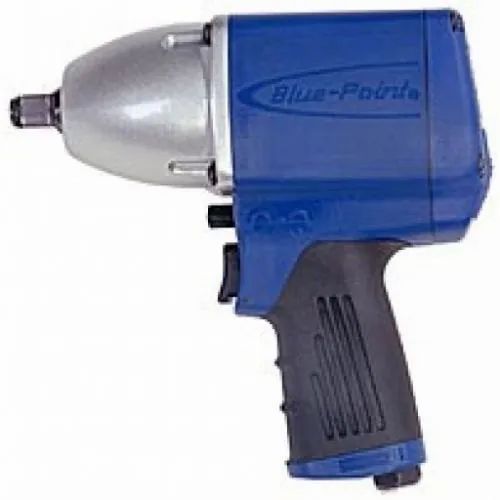 With the help of such a device, capercaillie, anchor screws are installed. The device on the modern market is presented in two versions: pneumatic or electric. The first one works under high air pressure, and its use is relevant for production purposes. To solve everyday problems, the second option would be an appropriate option.
With the help of such a device, capercaillie, anchor screws are installed. The device on the modern market is presented in two versions: pneumatic or electric. The first one works under high air pressure, and its use is relevant for production purposes. To solve everyday problems, the second option would be an appropriate option.
What is a wrench - now it's clear, it remains to figure out the main parameters of the tool, which will help you choose the right model.
It will be useful to know: What is the difference between a wrench and a screwdriver: 3 main criteria
Externally, such devices are similar to guns. The tool is equipped with a handle and a barrel, which consists of working elements and a number of systems. The latter also provides for the location:
The principle of operation depends on how the wrench is arranged. When the tool is turned on, the engine is also started, to which energy is supplied. After that, it is fed to the gearbox. The latter, in turn, actuates the clamp. If the model provides for the presence of a second spring, then this option is also suitable for unscrewing threaded connections.
When the tool is turned on, the engine is also started, to which energy is supplied. After that, it is fed to the gearbox. The latter, in turn, actuates the clamp. If the model provides for the presence of a second spring, then this option is also suitable for unscrewing threaded connections.
Chucks are available in different hole sizes: 1/2", 3/4" and 1". The first option is relevant to apply to solve problems in everyday life, the second and third - in construction and car workshops.
The principle of operation of the tool is based on physical laws. The hammer hits the shaft located at the exit, at the same time directing its force to it. Such movements lead to the formation of a moment of force. The design features of the device contribute to the fact that during operation the user does not feel vibrations. The scheme of operation of an impact wrench is similar to a simple hammer, when it is set in motion, swinging, and when the maximum amplitude value is reached, it is lowered onto the object.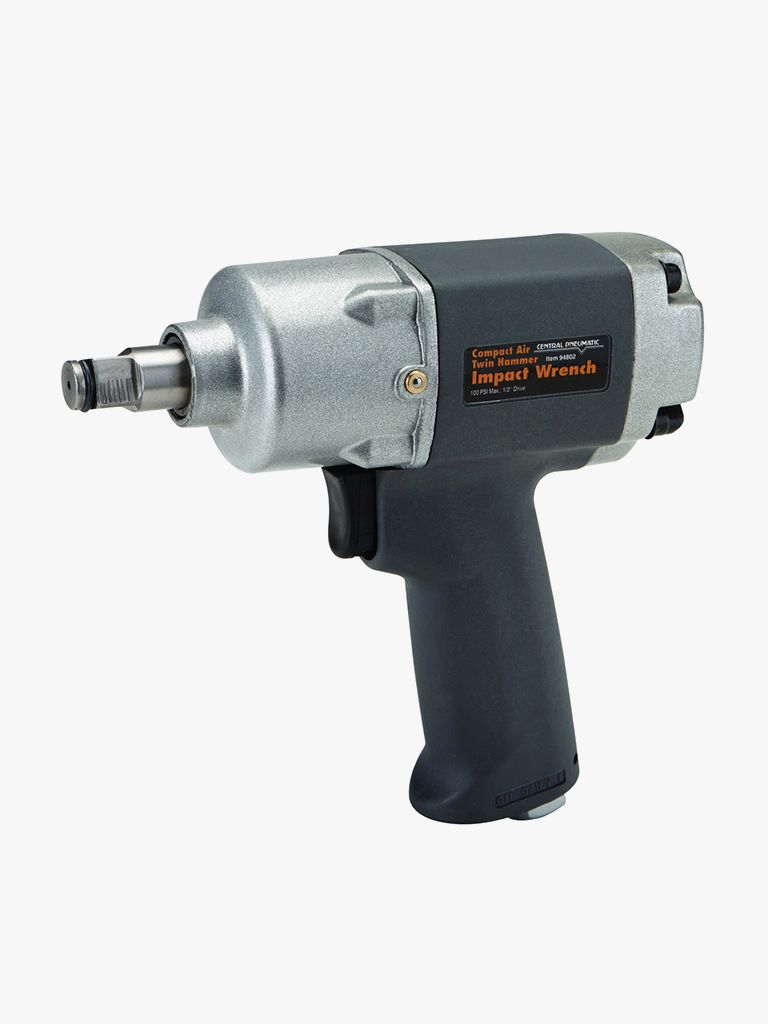
The pneumatic version differs in that it does not require a mains connection. Therefore, the operation of the tool is also possible in hard-to-reach places, on sites where there is no socket. The main advantages are high accuracy and speed of work. With this option, the solution of the task does not take even 5 minutes. How does a pneumatic wrench work? The principle of operation of such an instrument is the same as that of a percussion instrument. The only difference is that the first one works in the absence of a network. The torque is also different, the indicator depends on the size of the turbine, the number of blades and the pressure pumped by the compressor.
Most often, these tools are purchased for household needs and self-repair of cars. In the first place when choosing a device is 3 criteria. They are:
1. Power. The list of tool features also depends on the working life index. Professional models can deliver up to 1.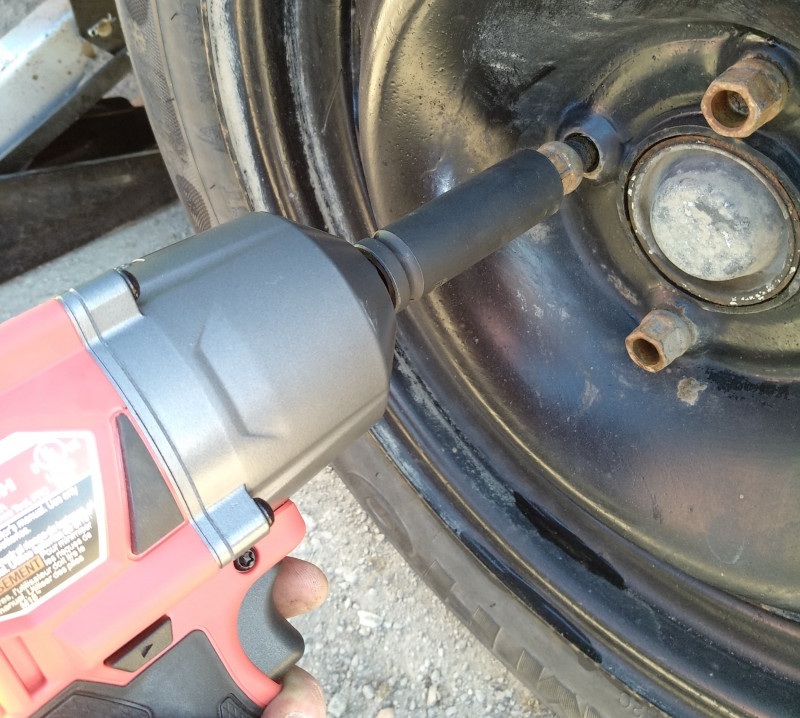 2 kW. This value is sufficient even for unscrewing bolts in a construction crane or fastening wheels on cargo vehicles. The larger the resource, the more opportunities the tool provides.
2 kW. This value is sufficient even for unscrewing bolts in a construction crane or fastening wheels on cargo vehicles. The larger the resource, the more opportunities the tool provides.
2. Torque. This parameter is the most important, so the choice must be approached carefully. With the wrong choice, the tool can tighten the nuts more than required. As a result, this leads to breakage of the keys, when on the road it is necessary to replace a certain part and install a new wheel. Too high a value will strip the thread. Therefore, this parameter must be taken into account and the tool must be selected based on the required value. For example, if it is required to repair plastic greenhouses, then 160 Nm will be enough, for the construction of a rail structure - 610 and 1000 Nm. The average value of 440 Nm is, for example, DeWalt DW294.
3. Number of revolutions. In modern versions, the value varies within 3000 rpm. This indicator is most appropriate if installation work is carried out at service stations or construction enterprises. For domestic needs, you should choose a tool with a lower value, excess power and the number of revolutions are not needed. The best option would be 40-100 rpm.
For domestic needs, you should choose a tool with a lower value, excess power and the number of revolutions are not needed. The best option would be 40-100 rpm.
The last two parameters are most important for professional instruments where human strength is not enough. In this case, you need to choose powerful devices.
It will be interesting to know: How to choose the right cordless screwdriver
Nutrunners differ from each other by the type of execution. There are several types of tools. First on the list is percussion. This option is considered the most effective on the modern market. What is an impact wrench? This is a device that allows you to perform a number of tasks, in particular, tightening and unscrewing screws and other threaded fasteners. In this case, the second option is possible only if there is a reverse.
Impact devices, compared to traditional ones, have better performance characteristics, although their cost is an order of magnitude higher.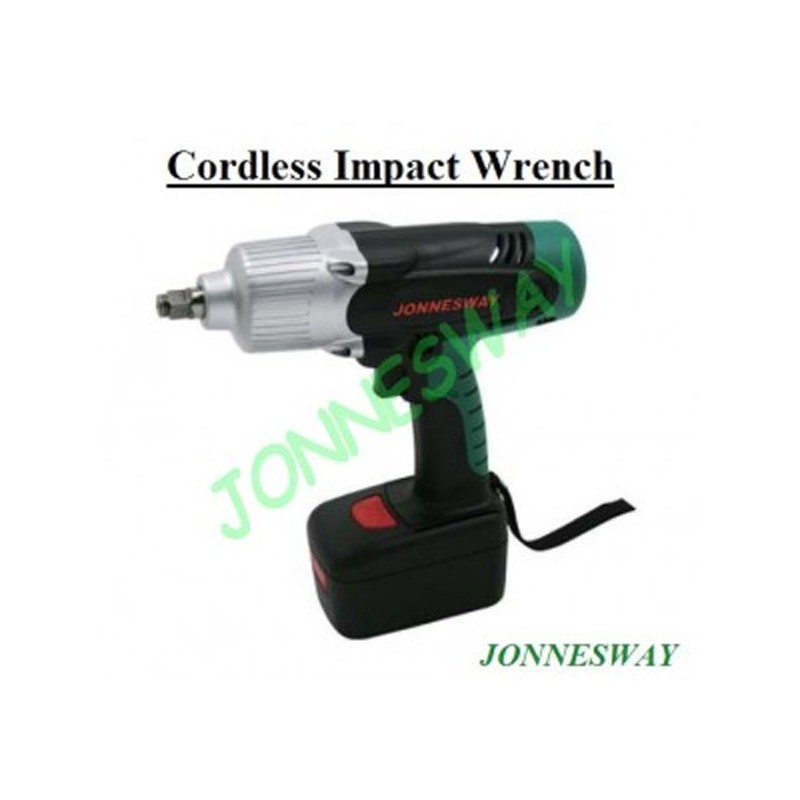 A special system for adjusting the moment of force allows you to customize the device for a specific case. The main characteristic of such a tool is the pulse frequency. The average value is approximately 3000 beats / min. The introduction of electronic torque control systems provides convenience for the user, guarantees the quality of the task.
A special system for adjusting the moment of force allows you to customize the device for a specific case. The main characteristic of such a tool is the pulse frequency. The average value is approximately 3000 beats / min. The introduction of electronic torque control systems provides convenience for the user, guarantees the quality of the task.
It is rational to purchase shockless models if you plan to work with overall and heavy structures. This is due to the high rotational torque. Such a device is used for tightening and unscrewing nuts. The device is also distinguished by the reverse option, and the handle is shaped like a pistol.
Many people are interested in what an impact wrench is. The operation of such a tool is based on the shock-rotational principle. As a result, movements are transformed into impulses. They go to the square, to which the end head is connected directly. Using a special button, the direction of operation of the device is set: twisting or unscrewing.
Impulse Wrench Appearance
There are a number of factors to consider before choosing an electric wrench. These are:
Matching the tasks ahead with the technical characteristics of the tool will help you choose the right model.
For this option to function stably, a permanent connection to the AC mains is required. The devices are represented by a wide range of power. At the same time, deviations in the accuracy of displaying a given indicator are insignificant, and the device differs:
The torque of these tools varies between 40-6000 Nm. In this case, the engine is cooled directly during operation, which eliminates the need to take a break.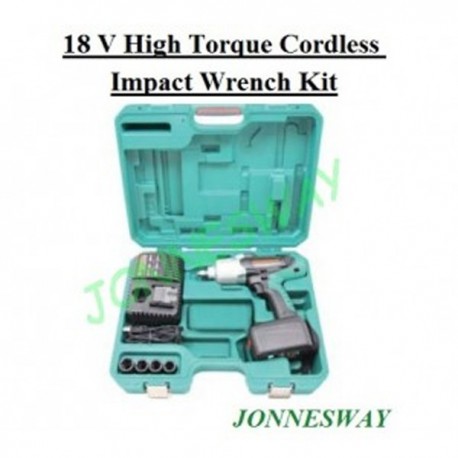
The pneumatic version of the devices works on a different principle. In other words, compressed air enters through a special tube from the compressor. The peculiarity lies in the fact that this type of apparatus does not include an engine in the design. This ensures the ease of the device, and, consequently, reducing the burden on the user during operation. Before choosing an air impact wrench, you need to understand the scope of the task ahead. This depends on the choice of the appropriate model.
But which wrench is better: electric or pneumatic? Each of the options has both advantages and disadvantages. For example, for tire fitting, it is rational to choose a pneumatic wrench. This is due to the fact that the service station already has a compressor to perform the work, so you don’t have to spend a lot. Such a choice of a wrench for a car service guarantees a high-quality performance of the task. In all other cases, it is more advisable to purchase an electric option due to the fact that compressors are expensive systems, and network connection is available to everyone.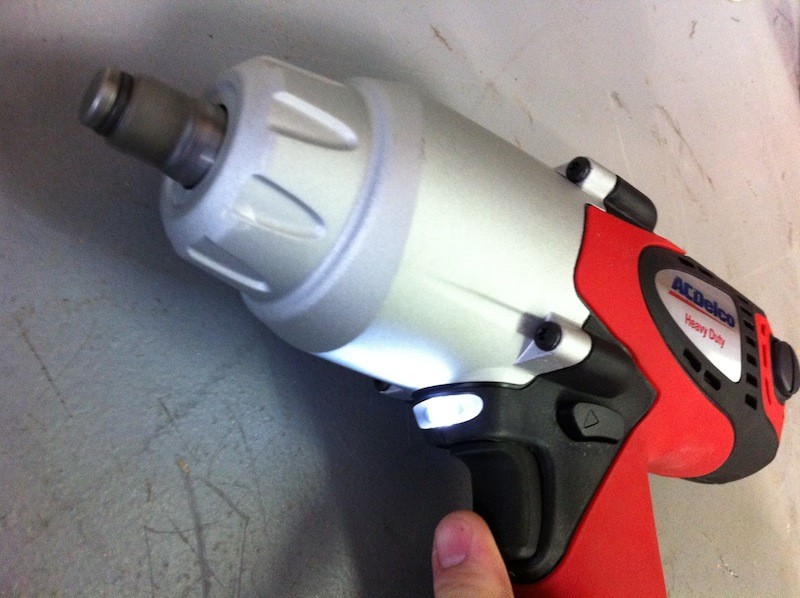
Recommended: TOP-10 impact drills: overview
These tools also differ in the type of drive. There are two options. Electric wrenches operate on mains power only. A wide range of capacities allows you to choose the most optimal model. The direction of rotation (clockwise or counterclockwise) is set using the built-in regulator. The weight of such devices varies between 1-9 kg. With the increase in power, the mass of devices also increases. Advantages of this option:
Impact-rotary mechanism - the basis of the functioning of devices. Among the main technical characteristics:
As the parameter values increase, so does the performance.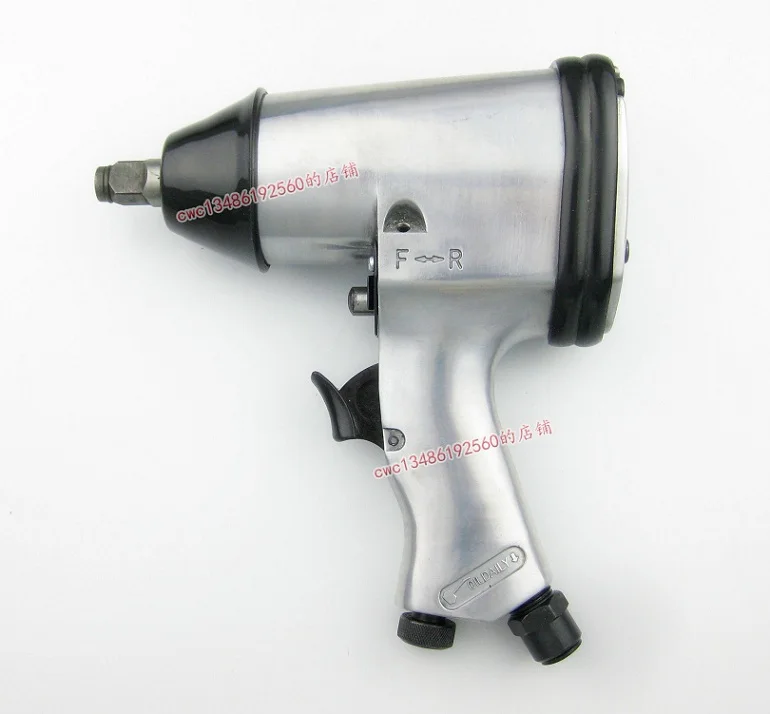 Technical parameters determine the mass of the device. Ergonomic design and vibration-reducing material provide durability and comfort.
Technical parameters determine the mass of the device. Ergonomic design and vibration-reducing material provide durability and comfort.
Cordless impact wrenches stand out on the market due to their autonomy and mobility. This option is suitable for solving problems in places where the network is not available or is unstable. The tool easily copes with unscrewing bolts and nuts, even if they are covered with rust. With the help of the device, parts made of various materials are fixed, in particular:
Compactness and ergonomics make it possible to use the tool both for solving everyday problems and for performing professional tasks. Such a device is suitable for motorists, especially when you have to change a wheel on the road. Equipping the tool with additional devices helps to increase the functionality. The work is carried out in the same way as in the previous version. It is based on impulse rotation. Due to the direction switch and the power regulator of the moment of force, the quality of the task and reliability are ensured. The design of the device includes:
Due to the direction switch and the power regulator of the moment of force, the quality of the task and reliability are ensured. The design of the device includes:
The shock function only increases the performance of the machine. The main technical parameter of this category of tools is the maximum torque. As the indicator increases, the capabilities of the device increase. This value varies between 100-500 Nm. It is worth paying attention to the frequency of strokes. In turn, voltage and capacitance determine the performance and operating time of the device. As the power increases, so does the weight.
Nutrunners are available in straight and angle shapes. In appearance, they resemble a drill. The only difference between them is the lack of a drill in the first. Instead of this work item, an extension nozzle is used, which is needed to fix the nut.
As for the materials used, the preference is given to the body made of metal, the handle with a rubberized lining. In the latter case, this is necessary to reduce vibration on the work surface and the user's hands. Rubberized inserts on the entire surface of the case minimize the negative impact, providing comfort and reliability. The production of devices is carried out according to innovative technologies:
In order to minimize breakdowns and the formation of various defects, preference should be given to manufacturers who have proven themselves in the market. Among the popular manufacturers are the following:
1. Bosch. The company offers high-quality wrenches, characterized by a long service life, reliability due to durable materials, and a comfortable handle. At the same time, the power range of the devices varies, which allows you to choose the most suitable model. Popular options include the GSR 18-2-LI Plus, GDS 18 E and GSB 18-2-LI Plus.
At the same time, the power range of the devices varies, which allows you to choose the most suitable model. Popular options include the GSR 18-2-LI Plus, GDS 18 E and GSB 18-2-LI Plus.
2. Makita. The brand produces models that are characterized by balance, versatility. Such a device will come to the rescue in situations where wrenches are powerless. At the same time, the company provides the market with options in three versions: amateur, semi-professional and professional. The most popular models are 6904VH and TW0200.
3. Sparky. Convenience, compactness, ergonomics, high-quality solution of the task - all this applies to the products of this brand. At the same time, versatility allows you to use the tool for various purposes. Almost all users prefer the GUR 10.8Li HD model.
A wide range facilitates the selection of the most optimal option.
It will be useful to know: How to choose the right angle grinder?
For greater safety and quality of work, the machine is equipped with auxiliary functions.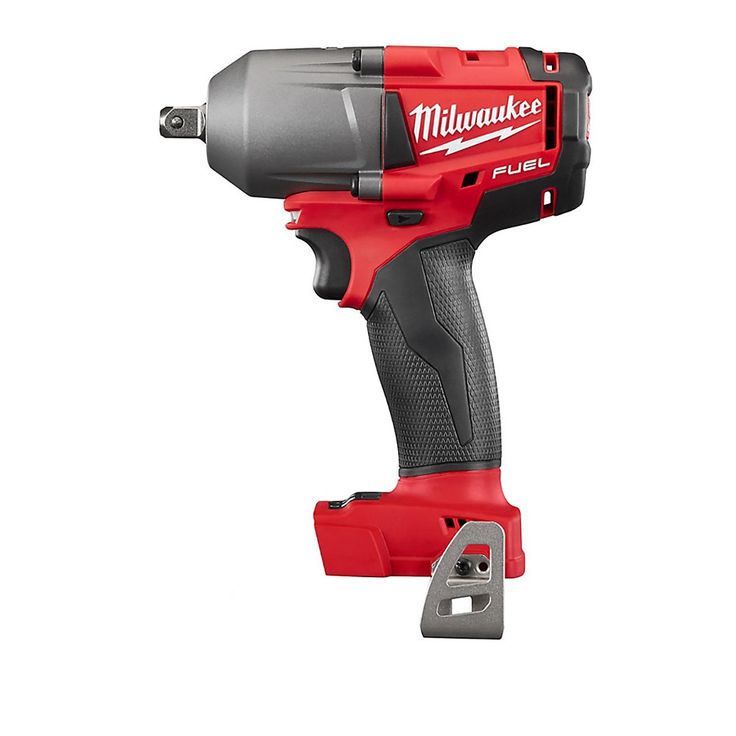 The presence of such systems increases the capabilities of devices. Most popular options:
The presence of such systems increases the capabilities of devices. Most popular options:
1. Electronic speed control system. This option reduces the number of rotations of the clamp in the event that an obstacle occurs during operation. This option helps to eliminate breakdowns and prevents them.
2. Emergency brake. This option is active in special cases. This, for example, jamming, hitting third-party objects. A special button, after pressing, stops the supply of energy, completely stopping the clamp. This option eliminates defects.
3. Backlight indicator. This option allows you to perform tasks at night or in poor lighting conditions. The indicator is located under the trigger. It allows you to clearly see the work surface even at dusk.
4. Another handle. This element provides reliability. It provides the user with a firmer grip on the tool when it is required to screw fasteners into a high-density material structure.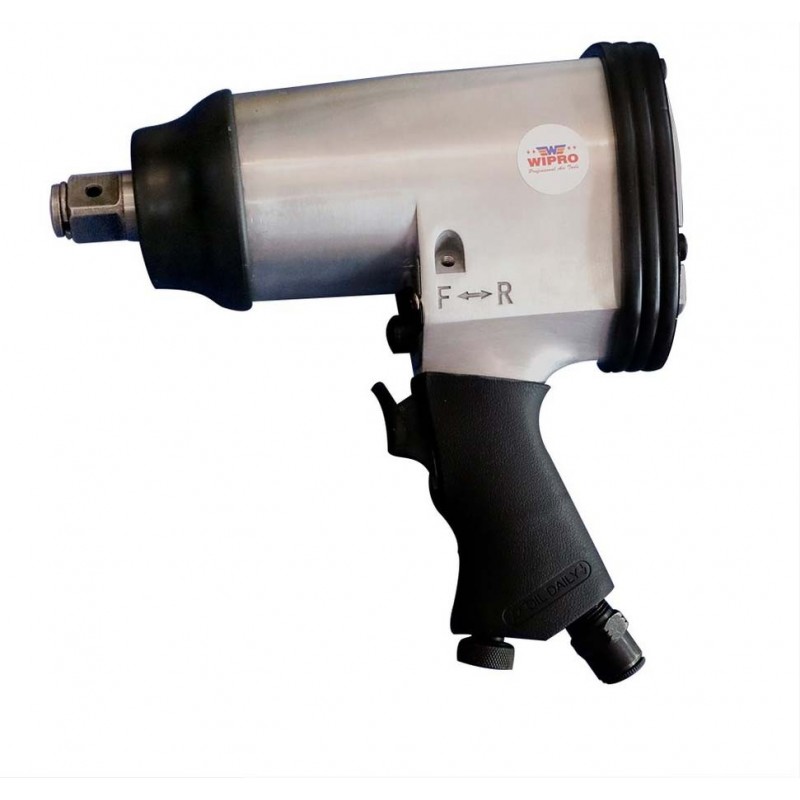 The presence of rubber pads minimizes slipping during operation.
The presence of rubber pads minimizes slipping during operation.
Brackets and straps are also used to store the tool compactly on the wall.
The choice of model is directly determined by the purpose of using the tool. When buying, power, speed and torque must be taken into account. These characteristics are the most important.
For example, the DeWalt DW292 model is suitable for domestic purposes, the Bosch GDX 18 V-LI option will be enough for service stations and tire shops, and professionals should prefer more powerful modifications, for example, Makita TW0350. The cost of devices is determined by the characteristics of the products.
Watch the video "How to choose an air impact wrench"
Basic principles destruction.
- It must not weaken as a result of working deformation.
- It must be able to safely reach the required preload force.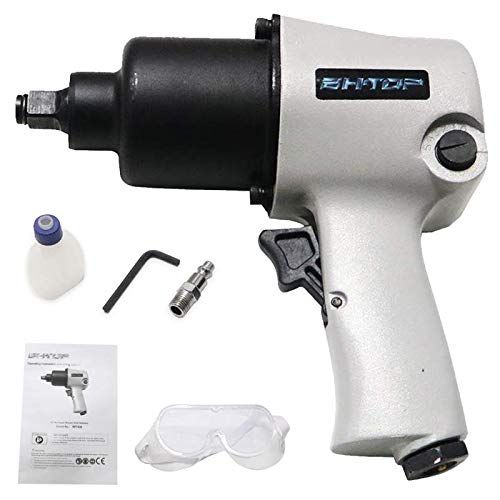
- It must be able to reliably hold the required preload force under all operating loads.
During the driving of fasteners, all the forces required to turn the screw are transferred to the head of the screw (or nut) by the applied torque. Torque is a force that is transmitted to an object, such as a screw, by rotational motion. The unit of torque is Nm (Newton meter). It consists of components F - force and l - lever arm. The following formula is used: force F (N) times lever arm l (m) = torque M (Nm) or F x l = M Torque is applied to the screw connection by using a wrench. It must overcome the resulting frictional forces and provide the power needed to elastically deform the screw and/or the surrounding material. The main question that is asked during a professional consultation on the subject of "screwing fasteners" is usually the question of the conditions for screwing fasteners for the application in question. Most types of fastener screwing can be reduced to two main types of screw connections, hard and soft.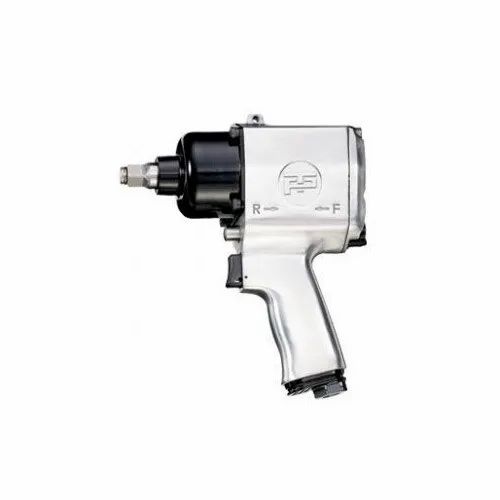 Screw connections in which a rigid material (usually metal) is located directly under the head of the screw are called rigid. Screw connections in which an elastic (flexible) material (usually wood) is located directly under the head of the screw, or in which the screw is screwed into an elastic material, are called soft. In the event that the screwing modes are not known, the problem can be solved by specifying the type of screw to be used and the material in which the screw connection is to be installed. The shape of the screw and the material to be connected usually make it possible to determine the intended screwing modes.
Screw connections in which a rigid material (usually metal) is located directly under the head of the screw are called rigid. Screw connections in which an elastic (flexible) material (usually wood) is located directly under the head of the screw, or in which the screw is screwed into an elastic material, are called soft. In the event that the screwing modes are not known, the problem can be solved by specifying the type of screw to be used and the material in which the screw connection is to be installed. The shape of the screw and the material to be connected usually make it possible to determine the intended screwing modes.
There are so-called small fixing screws and so-called screws . Numerous variations of these two basic types are available for different building materials and special screwing applications. They differ from each other in the shape and type of thread. Threads are responsible for holding objects together. Basically, there are threads for screw connections in metal and wood or plastics. In addition, there are special types of threads. There is a huge variety of screw heads, some of which have been designed for specific applications. The most important typical forms are shown in the illustrations below. Single slotted screws cannot be automatically centered and must be guided during screwing. Phillips head screws are self-centering, making them very useful for semi-automatic and automatic screwdriving processes. Hex head screws and socket head (Torx) screws do not require guidance after the wrench bit has been inserted, the bit holds the screw by positive locking. The profile with an internal sprocket (Torx) has an advantage over the classic hexagon. A profile with an internal sprocket (Torx) (known in technical circles as a "round hex") provides a large surface for torque transmission, that is, it reduces the pressure on the surface. Significantly reduces the risk of deformation of the screw head. Therefore, smaller bit sizes can be used and higher torque values can be achieved.
In addition, there are special types of threads. There is a huge variety of screw heads, some of which have been designed for specific applications. The most important typical forms are shown in the illustrations below. Single slotted screws cannot be automatically centered and must be guided during screwing. Phillips head screws are self-centering, making them very useful for semi-automatic and automatic screwdriving processes. Hex head screws and socket head (Torx) screws do not require guidance after the wrench bit has been inserted, the bit holds the screw by positive locking. The profile with an internal sprocket (Torx) has an advantage over the classic hexagon. A profile with an internal sprocket (Torx) (known in technical circles as a "round hex") provides a large surface for torque transmission, that is, it reduces the pressure on the surface. Significantly reduces the risk of deformation of the screw head. Therefore, smaller bit sizes can be used and higher torque values can be achieved.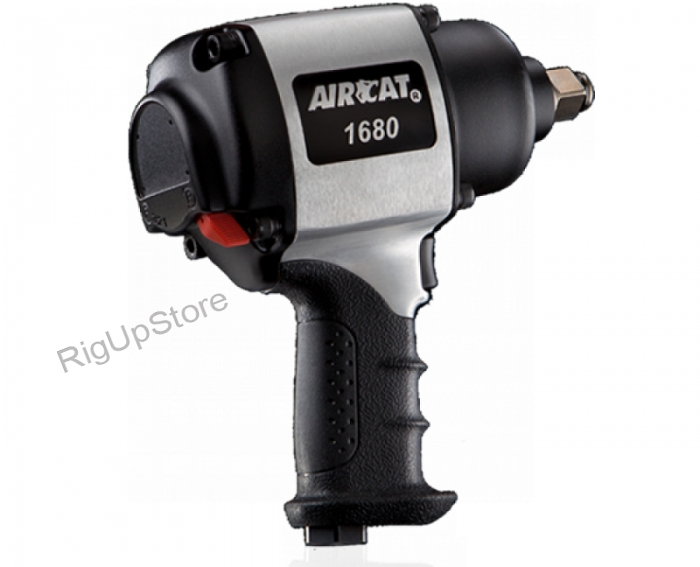 The so-called, " small fixing screws e screws have metric (or inch) threads on a cylindrical shank. You can screw them into pre-made threads or fix them with a nut.
The so-called, " small fixing screws e screws have metric (or inch) threads on a cylindrical shank. You can screw them into pre-made threads or fix them with a nut.
screws have characteristic wide pitch threads and characteristic tips. Their shanks are either cylindrical or conical.
"Self-tapping screws" - are screws for fixing drywall boards. they are like screws. Their shank is cylindrical and they are usually provided with a very sharp and hardened tip. The thread can reach the very tip. Screws for fastening drywall boards have a so-called funnel head. The slightly beveled funnel head ensures that the layer of cardboard on the surface of the gypsum board does not tear, but – provided the appropriate screw depth is ensured – is pulled under the screw head, forming its own washer protecting soft plaster. The result is a high holding force. This is a decisive factor in order to accurately maintain the screw insertion depth.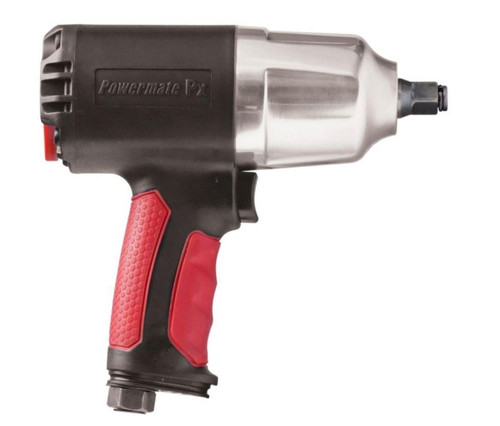 If you turn the screw too far, the cardboard layer will break and the screw will lose its holding power.
If you turn the screw too far, the cardboard layer will break and the screw will lose its holding power.
Sheet metal screws are used for screwing together thin sheets of metal. To do this, you will need to drill a pilot hole with a size approximately equal to the inner diameter of the screw thread. Sheet metal screws are shaped like wood screws. They are made of stronger metal and cut their own counter threads into pre-drilled sheet metal while screwing in.
Self-tapping screws are hardened and have drill bits. They drill their own holes in the material and also cut their own counter threads, which means they always have ground threads. Caution: The drilling thread on the screw must be longer than the total width of the material, in case the length of the profiles is greater than the width. Some types of drilling screws are provided with "blades" on the drill bit. These "blades" of the drill bit increase the diameter of the drilled hole in soft materials and therefore the screw threads are less clamped by the material (reduced friction) and cannot pull out the material to be fastened.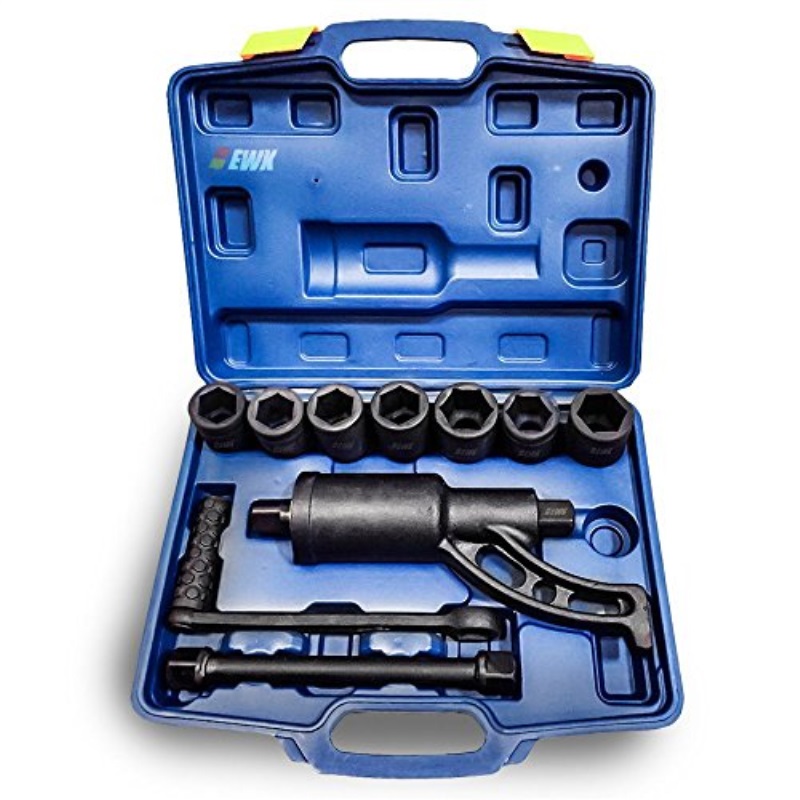 Once the "vanes" reach the harder material, they break off, the tip of the screw penetrates the harder material, and the screw cuts its own thread. Spacer screws are connecting elements with a specially shaped shank. Spacer screws can accurately apply very high forces. They are mainly used in mechanical engineering and transport engineering. Spacer screws are often, for example, cylinder head studs, tie rod bolts, brake cylinder screws. Depending on the purpose and area of application, most spacer screws can only be used once. Tightening the spacer screws requires continuous torque. They are unsuitable for impact hand wrenches because the expanding shaft of the screw will spring the "impact" momentum.
Once the "vanes" reach the harder material, they break off, the tip of the screw penetrates the harder material, and the screw cuts its own thread. Spacer screws are connecting elements with a specially shaped shank. Spacer screws can accurately apply very high forces. They are mainly used in mechanical engineering and transport engineering. Spacer screws are often, for example, cylinder head studs, tie rod bolts, brake cylinder screws. Depending on the purpose and area of application, most spacer screws can only be used once. Tightening the spacer screws requires continuous torque. They are unsuitable for impact hand wrenches because the expanding shaft of the screw will spring the "impact" momentum.
Wrench bits
Bit is a technical term borrowed from fastener technology that refers to the nut driver tool, i.e. screwdriver blade or head (for socket wrenches). The wrench size indicates the width of the fork wrench (wrench) opening or the spanner nut size for the wrench head. Wrench sizes are categorized according to DIN.
Wrench sizes are categorized according to DIN.
Caution: special screws may differ from DIN standards. There are milled, forged, hard, soft, ISO-TEMP and ACR bits. milled bits break the material structure, while forged bits have an unbroken structure as they are produced without material removal. For this reason, forged bits are more durable.
Rigid bits wear more slowly but are quite brittle. Hard bits are used in soft driving modes and are capable of providing a long service life. On the contrary, if they were used in hard-driving modes, then a sudden increase in torque at the end of the screwing process could break them.
Soft bits wear out faster but are quite strong. Soft bits are used for hard screw connections, in which case the decision is made in favor of better fracture resistance despite higher wear.
ISO-TEMP is a special manufacturing process for making BOSCH nutrunner bits.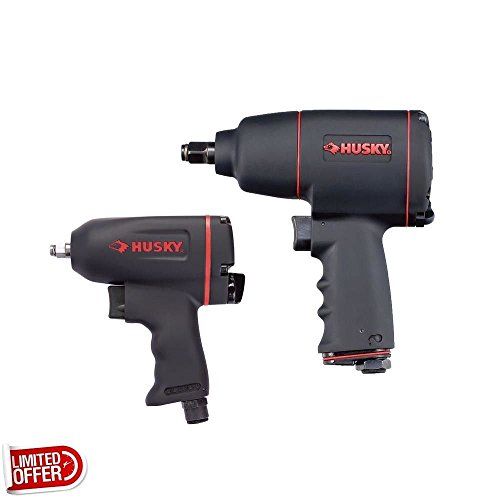 The bits are made from a special metal and then heat treated. Since ISO-TEMP bits combine a hard surface with a viscoelastic core, they are generally suitable for all screwdriving applications and feature particularly low wear.
The bits are made from a special metal and then heat treated. Since ISO-TEMP bits combine a hard surface with a viscoelastic core, they are generally suitable for all screwdriving applications and feature particularly low wear.
ACR means A nti C omeout R ecess. ACR bits prevent bit slippage to some extent. The tip of the bit is profiled and grips the surface of the screw head, preventing the bit from slipping. Recommended for loosening tight screw connections and for driving fasteners in hard to reach places where only slight pressure can be applied. Not recommended for screws with coated surfaces (screws with an anti-corrosion, high-gloss chrome or brass finish), as the finish can be damaged by the profiled section of the bit.
Bits for the Micro Rough Nut Runner have profiled side surfaces with micro roughness which are particularly resistant due to their titanium nitride coating. Therefore, these wrench bits have a much better "grip" and at the same time protect the surface of the screw.
Therefore, these wrench bits have a much better "grip" and at the same time protect the surface of the screw.
The impact wrench bits are made from specially hardened steel with a specially shaped shank to transfer the high torque forces of impact wrenches without the risk of cracking. Due to the high peak forces achieved during impact screwdriving, appropriately sized "socket sockets" made of extremely high quality material are required. Cheap sockets, especially 12 point sockets, will shatter - risk of injury The chrome layer on cheap, bright chrome heads will chip off - this is also a risk of injury. Finally, damaged heads can ruin screws and nuts. The shank insert is the part of the bit or nutrunner head that is inserted into the bit holder or power outlet section of the nutrunner. The following are the most commonly used shank types: - 1/4" hex - 1/2, 3/4" square The wrench bit is connected to the power tool either directly with the hex shank in the drill chuck or with a tool holder, which may be a component of a power tool or an accessory.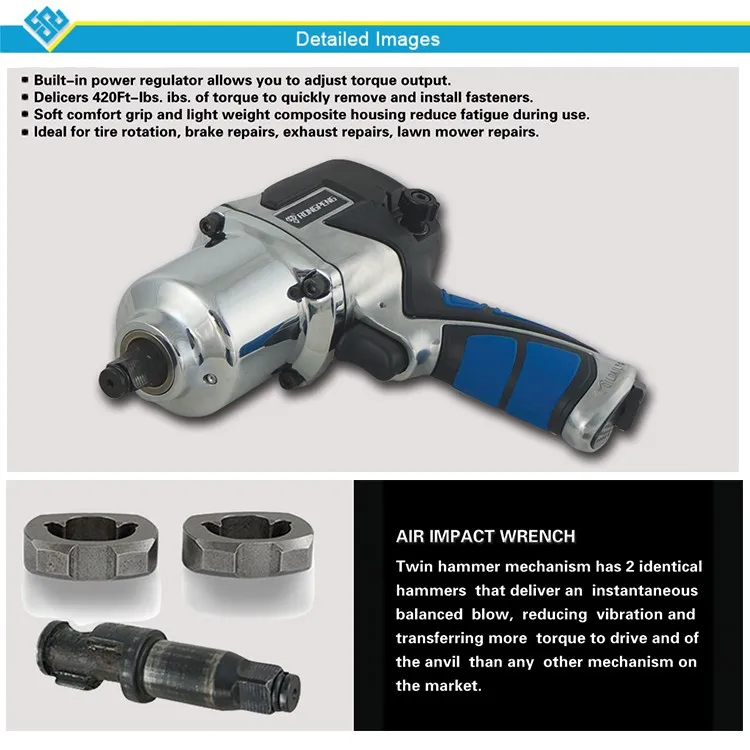 The bit is fixed with a spring ring, a ball latch, or, as in the case of a drill, also with a drill chuck. You must choose the principle of locking - with a ball latch or a spring ring - depending on the application and purpose of use.
The bit is fixed with a spring ring, a ball latch, or, as in the case of a drill, also with a drill chuck. You must choose the principle of locking - with a ball latch or a spring ring - depending on the application and purpose of use.
Characteristic features of ball-latch locking:
- very secure locking
- easy and simple insertion and removal of bits
- shank insert section should be slightly longer
- higher manufacturing cost
locking with snap ring:- shorter bits can be used
- simple and cheap system
- locking surface subject to higher wear
- insertion and removal often require the use of additional tools (eg pliers).
Caution: wrench bits with circlip or ball lock must not be used with an inappropriate lock. If a wrench bit designed to be secured with a ball latch is inserted into a circlip holder, the circlip may become warped and wedged inside the ball latch slot, and the holder may be damaged if the holder is forcibly separated.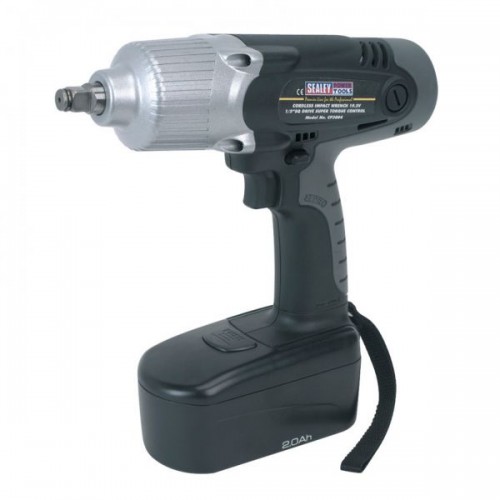 Conversely, a wrench bit designed to be secured with a circlip will not lock into a ball-lock holder. Sockets are locked into the square drive shank with a safety pin and rubber ring, spring-loaded locking pin or ball latch. The magnetic bit holder has both advantages and disadvantages.
Conversely, a wrench bit designed to be secured with a circlip will not lock into a ball-lock holder. Sockets are locked into the square drive shank with a safety pin and rubber ring, spring-loaded locking pin or ball latch. The magnetic bit holder has both advantages and disadvantages.
Advantages: bits are magnetizable. As a result, screws made of magnetic materials (such as steel) stick to the bits. The screw will not fall off at the beginning of the screwing process and the second hand is left free as there is no need to hold the screw.
Disadvantages: chips and sheared particles of steel screws can stick to the bit and interfere with the screwing process. Problems arise during the use of slotted screws: the wrench bit easily slips out of the slot in the head of the screw because it cannot find lateral support.
Solution: Use a guide sleeve adapted to the size of the screw head. To find a suitable sleeve for a slotted screw,.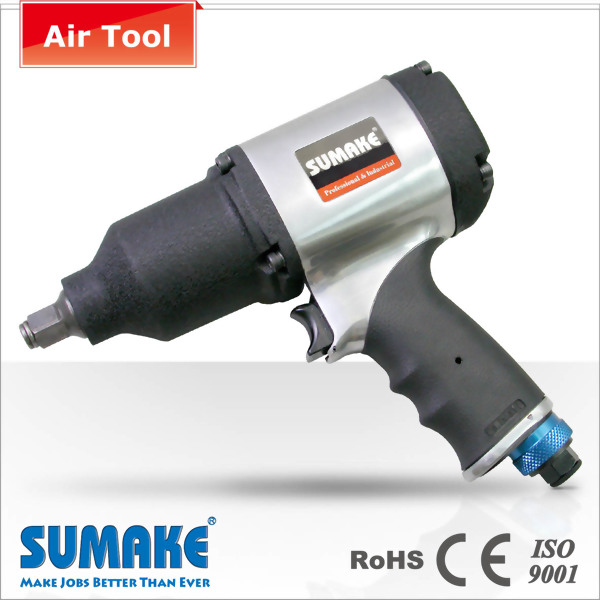 We recommend using a reference table. (See Appendix "Reference Tables").
We recommend using a reference table. (See Appendix "Reference Tables").
Fastener driving power tools
The nut driver must be capable of reliably and economically driving or unscrewing screws (nuts) according to specific driving conditions, as quickly as possible and with the least amount of effort and with the least number of responses for the user tool. Due to the principle of operation, a distinction must be made between: - Depth stop nutrunners - Torque nutrunners - Impact drill drivers. There is no universal multi-purpose wrench because universal tools always mean compromise. And compromises do not contribute to the achievement of ideal results of work, both in terms of quality and speed of its execution. In the do-it-yourself environment, drills are often used to drive fasteners, due to the small number of screw connections that craftsmen have to make. But a drill is not a wrench. Driving fasteners with drills results in reduced quality, speed, cost effectiveness, and convenience compared to nutrunners.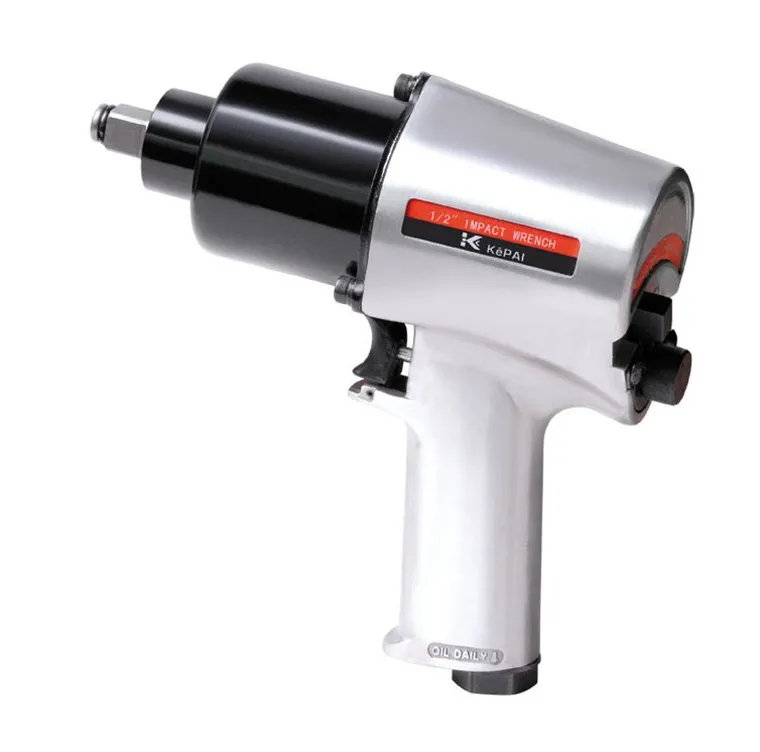 The use of drills in the professional field is limited to rare cases. The drills have an electronic torque limiter. If torque is increased in the wrench bit, the motor will respond by increasing the power input. An increase in power consumption is detected by the electronic control unit and compared to a pre-set maximum value (torque limit). When this setpoint is reached, the electronic control unit cuts off the power supply to the motor. An electronic torque limiter drill cannot replace an adjustable torque wrench, because the electronic control only turns off the motor, it does not brake it, the mass of the motor flywheel continues to turn the wrench bit and screw until it stops. As a result, the tightening torque will be relatively inaccurate.
The use of drills in the professional field is limited to rare cases. The drills have an electronic torque limiter. If torque is increased in the wrench bit, the motor will respond by increasing the power input. An increase in power consumption is detected by the electronic control unit and compared to a pre-set maximum value (torque limit). When this setpoint is reached, the electronic control unit cuts off the power supply to the motor. An electronic torque limiter drill cannot replace an adjustable torque wrench, because the electronic control only turns off the motor, it does not brake it, the mass of the motor flywheel continues to turn the wrench bit and screw until it stops. As a result, the tightening torque will be relatively inaccurate.
A drill with an electronic torque limiter exhibits disadvantages during screwing of fasteners due to the principle of its operation. With the same torque preset, the rotating mass of the motor will produce less torque at lower speed and more torque at higher speed in the nutrunner bit.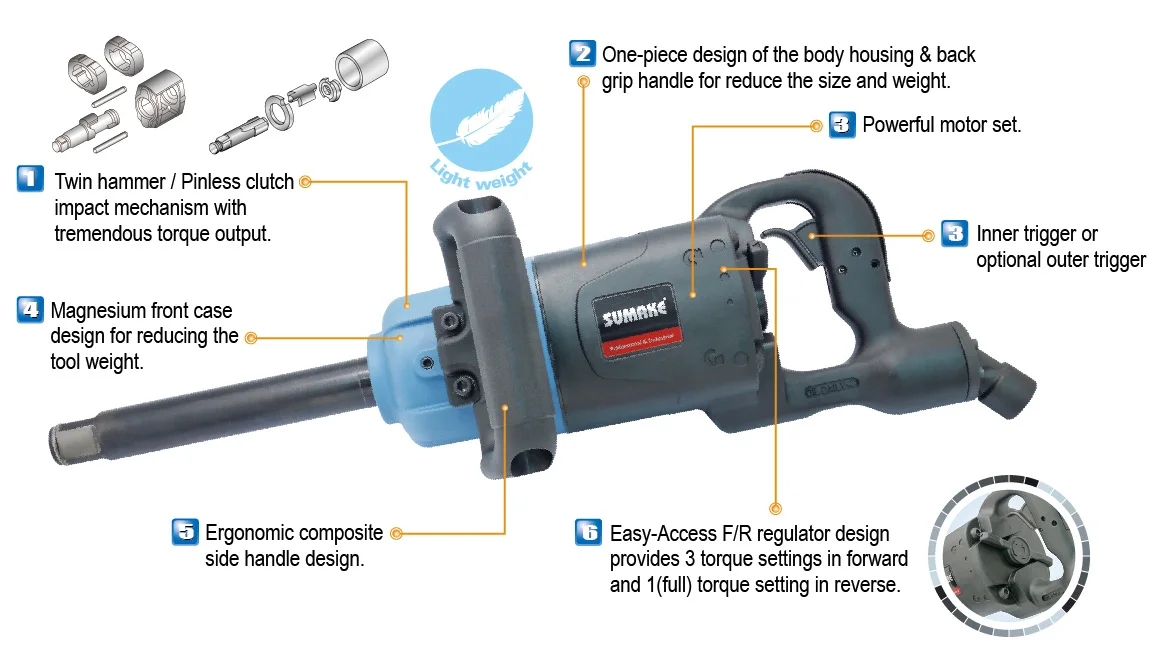 Therefore, the torque achieved depends on the number of revolutions of the output shaft and can, in the case of hard drive modes, damage the screw. The suddenly occurring restoring moment is unpleasant for the user. When used as directed, the electronically adjustable torque limiter expands the scope of a quality drill, allowing for occasional fastener driving jobs. In addition, the torque limit can be used as an individually adjustable "safety clutch" in certain applications.
Therefore, the torque achieved depends on the number of revolutions of the output shaft and can, in the case of hard drive modes, damage the screw. The suddenly occurring restoring moment is unpleasant for the user. When used as directed, the electronically adjustable torque limiter expands the scope of a quality drill, allowing for occasional fastener driving jobs. In addition, the torque limit can be used as an individually adjustable "safety clutch" in certain applications.
Nutrunners must not be used as drills either. Nutrunners are specially designed for screwing fasteners. The exception is the so-called cordless "drills/nutrunners", which can also be used for drilling, however, their rotation speed is slower than that of drills, and drilling holes of small diameters takes a little longer.
The use of cordless impact wrenches is recommended in places where ease of handling and independence from mains power are important. If, however, exceptional performance and continuous operation are required, it is best to use a tool that uses mains power.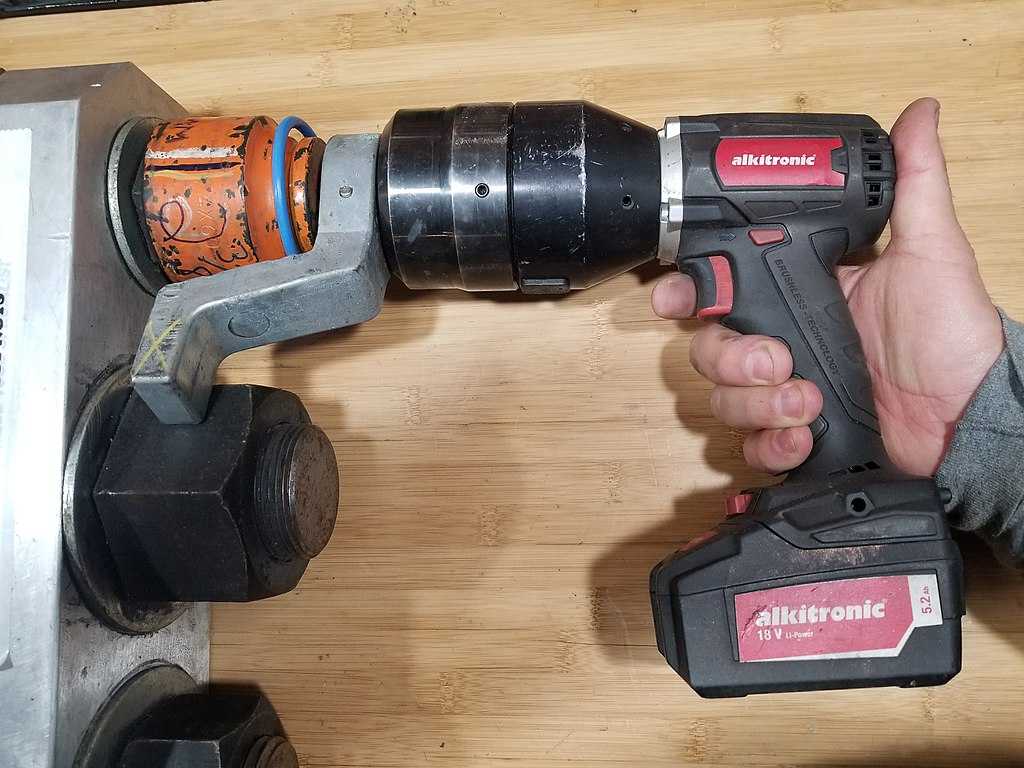 Cordless wrenches are generally slower than mains powered wrenches because the battery can store relatively little power. By reducing the standard speed of cordless nutrunners, more screws can be driven with one battery charge. If a cordless wrench were designed to be as powerful as a mains powered wrench, only a very small number of screws could be driven on a single battery charge. Therefore, it is not recommended to directly compare the performance of a battery powered wrench with the performance of a mains powered wrench.
Cordless wrenches are generally slower than mains powered wrenches because the battery can store relatively little power. By reducing the standard speed of cordless nutrunners, more screws can be driven with one battery charge. If a cordless wrench were designed to be as powerful as a mains powered wrench, only a very small number of screws could be driven on a single battery charge. Therefore, it is not recommended to directly compare the performance of a battery powered wrench with the performance of a mains powered wrench.
Fastener driving with depth limitation
Depth stop nutrunners are nutrunners capable of accurately driving screws until a predetermined depth in relation to the surface of the workpiece is reached. Depth gauge nutrunners operate without torque limitation and always at full power until the depth gauge makes contact with the surface of the workpiece. The bit drive (bit holder and wrench spindle) extends axially behind the screw a few millimeters further; then the operation of the driving mechanism is interrupted by disengaging the clutch and the screwing process is completed. If the depth gauge has been set correctly, then the screw should now be perfectly screwed flush with the surface of the workpiece. Depth gauge nutrunners cannot be used in harddriving modes. In hard drive modes, torque must be limited to ensure that the environment surrounding the screw (including the user of the tool) is not endangered. It is not possible to set the depth gauge so precisely that the clutch disengages exactly at the right moment, because in practice the tolerances of both the workpiece and the screw are too large for this purpose. The complex design of the release clutch (usually made up of several parts and with specially shaped clutch surfaces) makes it possible to disengage the clutch almost silently if the nutrunner is handled professionally.
If the depth gauge has been set correctly, then the screw should now be perfectly screwed flush with the surface of the workpiece. Depth gauge nutrunners cannot be used in harddriving modes. In hard drive modes, torque must be limited to ensure that the environment surrounding the screw (including the user of the tool) is not endangered. It is not possible to set the depth gauge so precisely that the clutch disengages exactly at the right moment, because in practice the tolerances of both the workpiece and the screw are too large for this purpose. The complex design of the release clutch (usually made up of several parts and with specially shaped clutch surfaces) makes it possible to disengage the clutch almost silently if the nutrunner is handled professionally.
Benefits:
- no more noise annoyance - no vibrations
- no clutch wear
- extended nutrunner bit life.
If depth gauge nutrunners are often used in the job, then quiet clutch nutrunners should be used.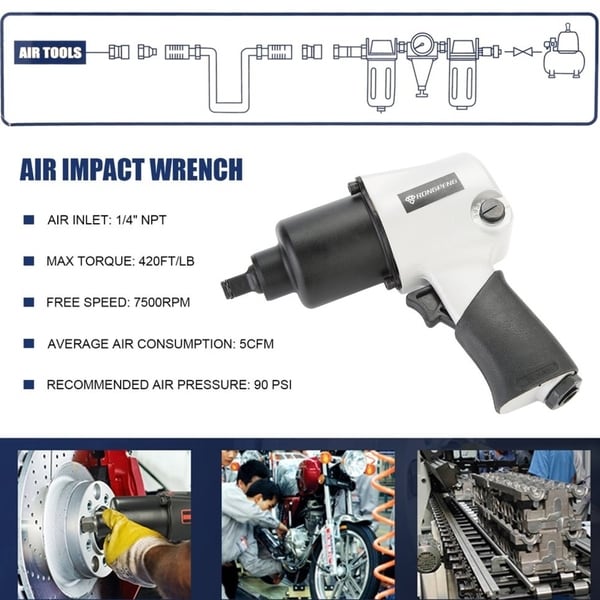 Depth gauge nutrunners are available with the same power rating but high and low speed. For areas where self-drilling screws are used, in most cases it is better to use higher rotation speeds. For all other screw types, lower rotational speeds are preferred. When using screws with sealing caps, a special depth gauge must be used to ensure that the sealing cap's connecting tape - not included in the dimension specified for the depth gauge - is not damaged.
Depth gauge nutrunners are available with the same power rating but high and low speed. For areas where self-drilling screws are used, in most cases it is better to use higher rotation speeds. For all other screw types, lower rotational speeds are preferred. When using screws with sealing caps, a special depth gauge must be used to ensure that the sealing cap's connecting tape - not included in the dimension specified for the depth gauge - is not damaged.
Caution: The depth gauge must always stop at the surface of the workpiece. It must not come into contact with the screw or sealing elements (if used) or washers. For screws with pointed sealing caps, special depth gauges are used.
Screwing fasteners with adjustable torque
Adjustable torque wrench works as follows. When a certain torque is reached, which was previously set on the tool, the clutch will disengage and interrupt the power transmission between the motor and the nutrunner bit.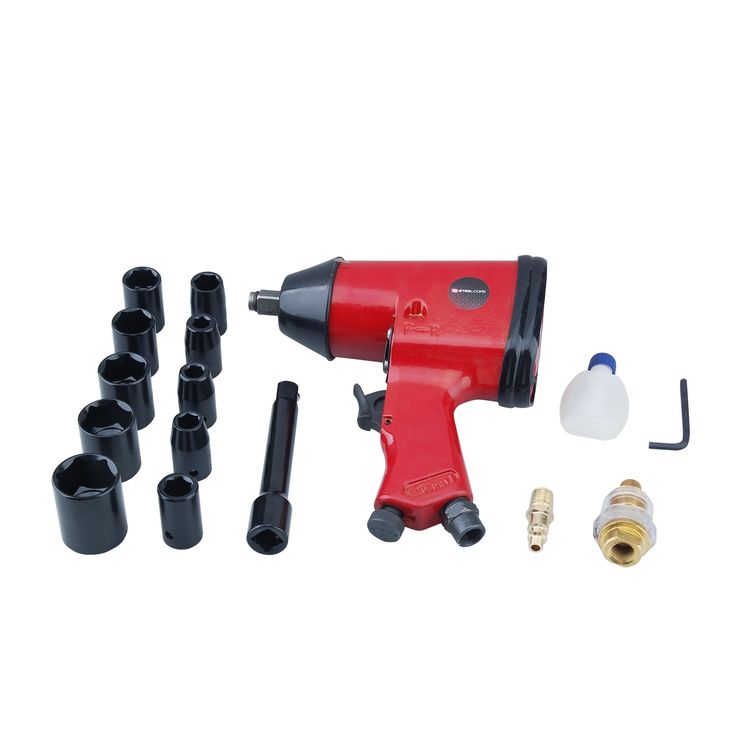 The torque is usually set by changing the preload force of the clutch pressure spring. Nutrunners with a torque limiter clutch are used without exception in the case of hard screwing modes, however, they can also be used in less rigid materials if they are homogeneous in their structure (particle board, fiberboard, thermoplastic). Their use is always recommended if the screw head is in contact with the workpiece directly or through a washer or hard backing material (eg metal rebar, hinges) and is unable to penetrate the material. If the hardness of the material to be machined is uneven (such as wood), or if the exact depth of screwing of fasteners is important, then it is not recommended to use adjustable torque wrenches to achieve professional results. The use of adjustable torque wrenches is not recommended for soft screwing in material with uneven hardness (wood). When you drive, for example, a countersunk head screw into soft material, the screwing torque does not increase sharply enough to trigger the torque limiter at exactly the right moment.
The torque is usually set by changing the preload force of the clutch pressure spring. Nutrunners with a torque limiter clutch are used without exception in the case of hard screwing modes, however, they can also be used in less rigid materials if they are homogeneous in their structure (particle board, fiberboard, thermoplastic). Their use is always recommended if the screw head is in contact with the workpiece directly or through a washer or hard backing material (eg metal rebar, hinges) and is unable to penetrate the material. If the hardness of the material to be machined is uneven (such as wood), or if the exact depth of screwing of fasteners is important, then it is not recommended to use adjustable torque wrenches to achieve professional results. The use of adjustable torque wrenches is not recommended for soft screwing in material with uneven hardness (wood). When you drive, for example, a countersunk head screw into soft material, the screwing torque does not increase sharply enough to trigger the torque limiter at exactly the right moment. In addition, the texture of the softest materials (wood) is uneven, which implies that the same torque setting will result in different fastener results.
In addition, the texture of the softest materials (wood) is uneven, which implies that the same torque setting will result in different fastener results.
Adjustable torque wrenches are available with the same power rating but high and low speed. For areas where self-drilling screws are used, in most cases it is better to use higher rotation speeds. For all other screw types, lower rotational speeds are preferred. In addition, there is a basic practical way: high rotation speed for small screw diameters, low rotation speed for large screw diameters.
Rotary impact screwdriving of fasteners
Impact wrenches (correct: impact drill wrenches) are wrenches whose torque does not increase continuously during the operation, but acts on the screw connection by means of repeated "percussive impacts". Impact drills/nutrunners are used in hard drive applications and for high torque applications. The duration of exposure determines the available torque within a given range.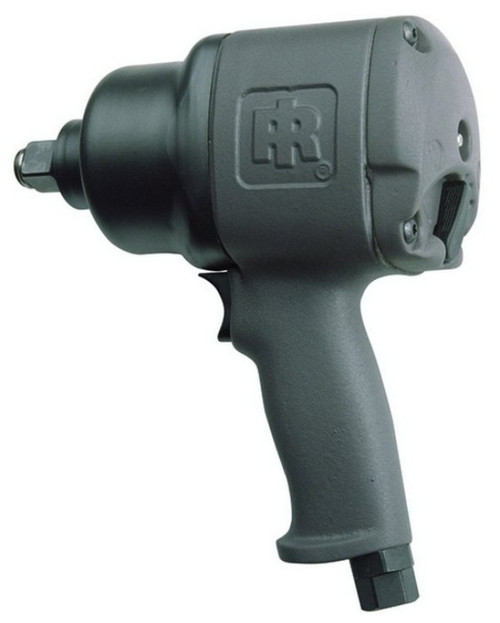
- the shorter the exposure time, the lower the torque achieved.
- The longer the exposure time, the higher the torque achieved.
No: after a certain duration of exposure (in most cases approx. 5 seconds) the torque will no longer increase.
The torsion shaft has a shank with a finely calibrated reduced diameter. Therefore, it has a springy effect and absorbs part of the energy transmitted to it. It is inserted between the impact wrench drill and the bit. Depending on the effective diameter, the torsion shaft can transfer more or less force to the bit, acting on it. This practical way is used to apply it: screw thread inside diameter = effective torsion shaft diameter. For high precision screw connections, the appropriate torsion shaft must be determined by trial and error.
The correct screw connection torque is checked with a torque wrench during "screwing" and not during "unscrewing". During unscrewing, the torque appears for such a short period of time that it cannot be determined accurately enough for professional purposes.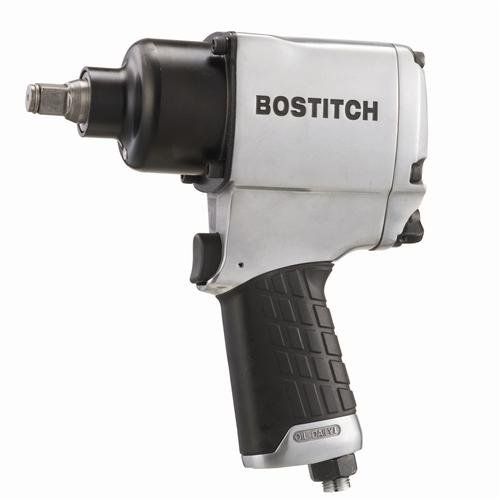 However, during screwing, the torque increases gradually, and the torque wrench can accurately detect it if you continue to turn the screw. In addition, the use of locking elements (eg 'springs', serrated lock washers) will introduce important differences between the torque for screwing and unscrewing.
However, during screwing, the torque increases gradually, and the torque wrench can accurately detect it if you continue to turn the screw. In addition, the use of locking elements (eg 'springs', serrated lock washers) will introduce important differences between the torque for screwing and unscrewing.
The screwing or unscrewing of screws with resilient bodies (so-called expansion screws) should in most cases not be carried out using impact drills/nutrunners commonly used by specialists, since the resilient body of the screw "absorbs" part of the applied torque, the magnitude of which is then no longer satisfies the requirements for screwing and unscrewing the screw connection.
Before attempting a high quality screw connection, several test screw connections should be made, as in daily practice design values are often exceeded or not reached due to tolerances, grease and contamination in the threads. Trial screw connections will help you find out if the selected method of screwing fasteners meets the requirements for this application.
Screw connections may self-loosen under adverse operating conditions. If a screw connection is self-loosening, the forces acting on the connected parts can no longer be absorbed by their cohesive force. These forces begin to act on the screw as shear forces and are capable of breaking the screw. Possible contributory factors: - vibrations - alternating loading - thermal expansion - steady-state behavior of materials Provided that screws and tightening torques have been measured correctly, screw connections can be effectively protected by taking appropriate measures. The most important measures are based - on adhesive bonding - on positive locking - on interlocking
The different methods of screw fixation work as follows:
Adhesive fixation
Adhesive fixation depends on adequate adhesives applied to the threads before the fasteners are screwed in, which hardens after the screw has been tightened. Adhesives can also be applied as a microencapsulated coating on the screw.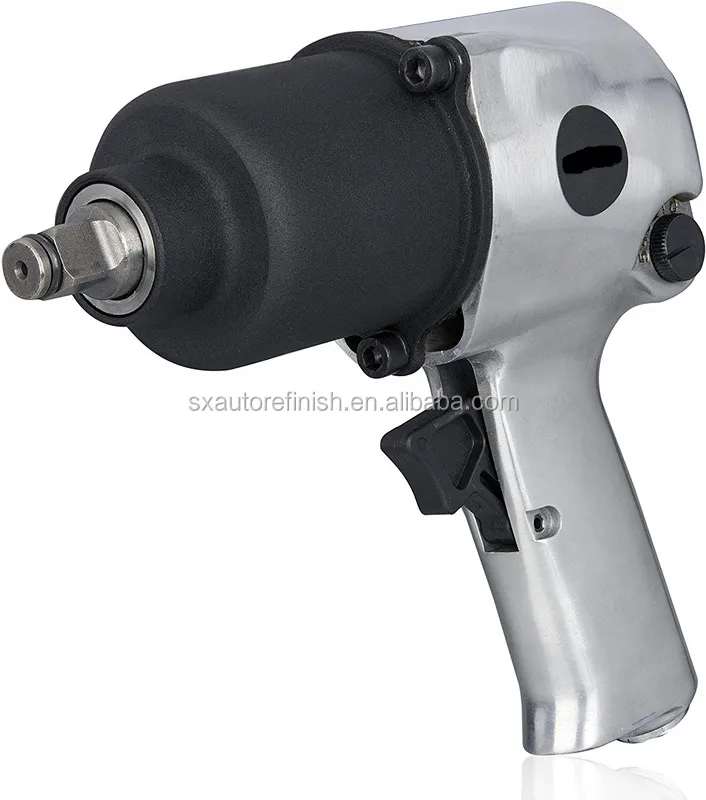
Forced locking
Locking by frictional force is based on the elastic deformation of the locking elements during the tightening of the screw connection. This increases the coefficient of friction to such an extent that the screw connection can no longer loosen on its own. Typical locking elements are: – Grover washers – Spring rings – Serrated lock washers – Serrated spring washers – Locknuts – Plastic spacers
Interlocking
This method usually requires special screws and nuts. A typical interlocking method is to use a cotter pin in a diagonally drilled screw along with a castle nut. Screws located near the edges of the workpiece can be locked with the lock washers turned up. Interlocking locking elements do not change the required tightening torque. However, in this case it may be necessary that the screw and the nut be positioned in relation to each other in a particular manner.
Working safely with nutrunners
During screwing and unscrewing, reactions of the tool may occur which may endanger the user.